From Aburi to Oshizushi: The History of Sushi and Sashimi

How a 15th-century snack food became a 21st-century international sensation in Japanese restaurants everywhere.
There’s nothing quite like the taste of fresh sushi. The perfect balance of delicate, tender seafood mixed with the sweetness of vinegar-seasoned rice, this Japanese dish has swept the world with its delicious intrigue and vibrant looks. What’s just as colourful as its flavour and appearance though, is the story behind this beloved food.
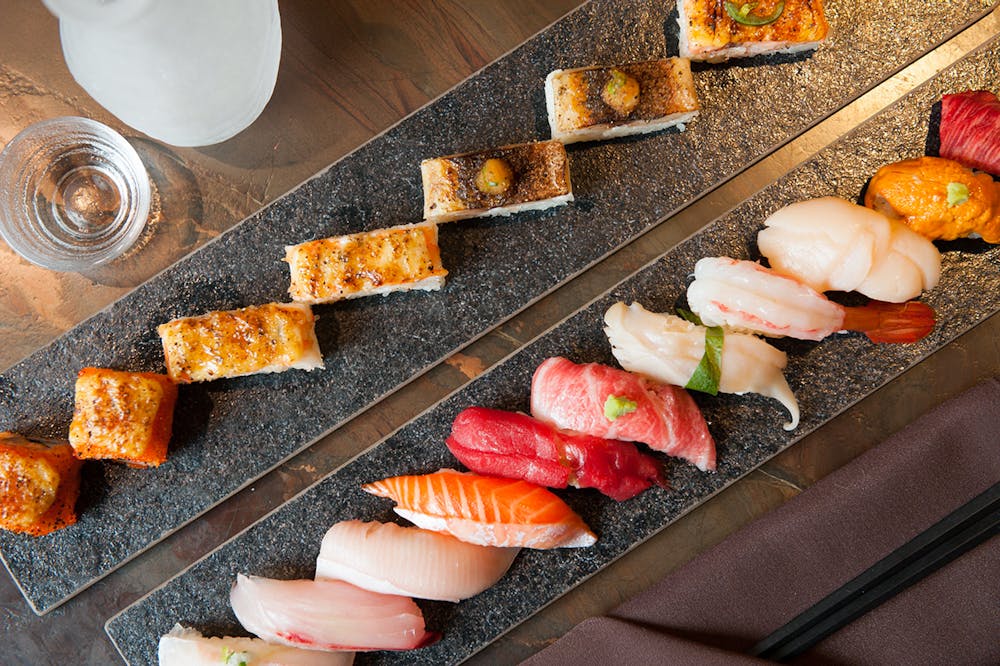
Our Kyukyoku platter featuring different nigiri, and our Aburicious platter with a variety of our aburi sushi and JaBistroll.
The philosophy of Japanese cuisine is to respect the natural palates of ingredients, which is why eating fresh, raw fish was a tradition even before the creation of what we know as sushi and sashimi today.
However, the idea behind these delectable dishes originated as a means of preserving fish through fermentation where the fish is salted and placed in rice. Once the rice was cleaned off, the fish was ready to eat. In the 15th century, a unique development shortened this process where both the fish and rice could be eaten, making sushi a popular snack because of its combination of rice, a staple household food, and seafood.
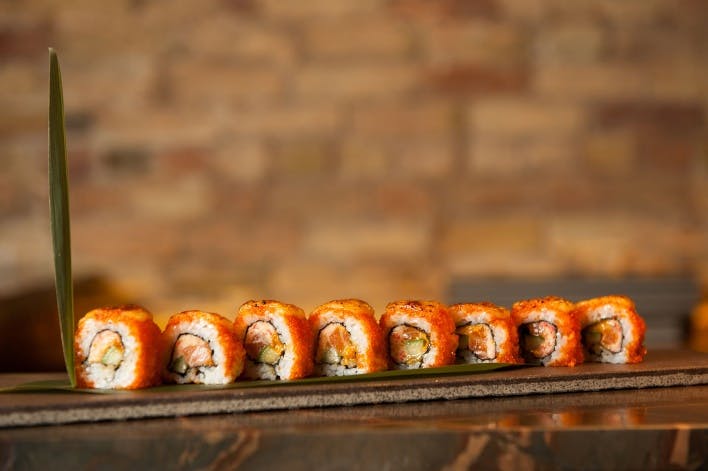
The JaBistroll, our take on a maki roll with hotate, snow crab, salmon, cucumber, and tobiko.
Between 1600 and 1867 of the Edo period, people began to make sushi without fermentation. In the 17th century, sashimi grew in popularity and by the end of the 18th century, nigiri sushi (slices of raw fish onto bite-sized, hand-rolled vinegar-seasoned rice) appeared.
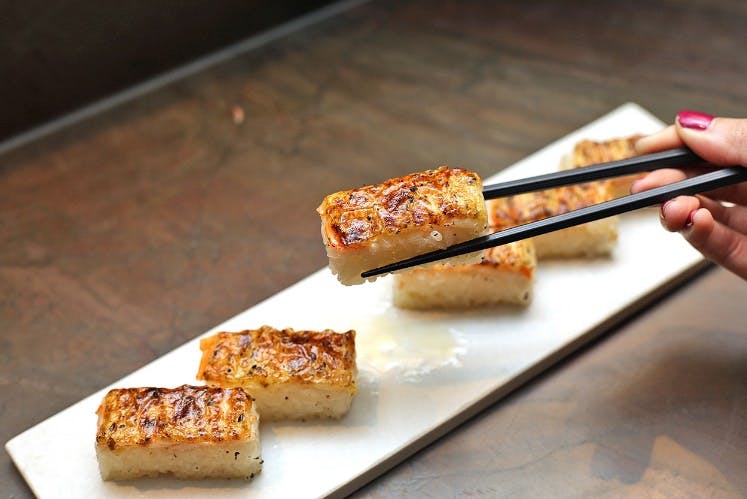
Our Ebi Oshizushi, pressed shrimp sushi.
During this time, there was a burst of creativity and innovation around making sushi. Different styles were developed including norimaki, vinegar-flavoured rice and seasoned boiled vegetables rolled into paper-thin layers. Sushi restaurants also became increasingly popular as they offered ready-made dishes, changing sushi from being a preserved food to a fast food.
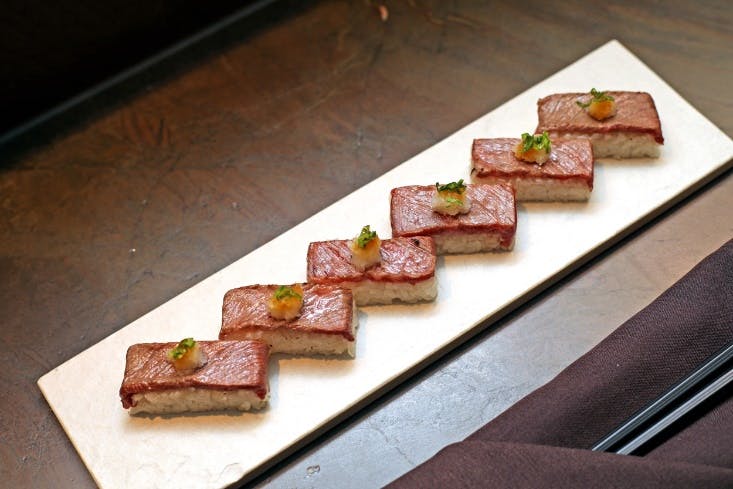
Our Wagyu Oshizushi, pressed wagyu beef sushi.
One of the oldest forms of sushi, oshizushi or pressed sushi, originated more than 400 years ago in the Kansai region of Osaka. It’s made by compressing sushi rice with fish and other toppings, and then cutting it into smaller pieces for a delightful experience in every bite. Each piece is precise and exquisite with their magical ability to carry a world of flavour in its modest size.
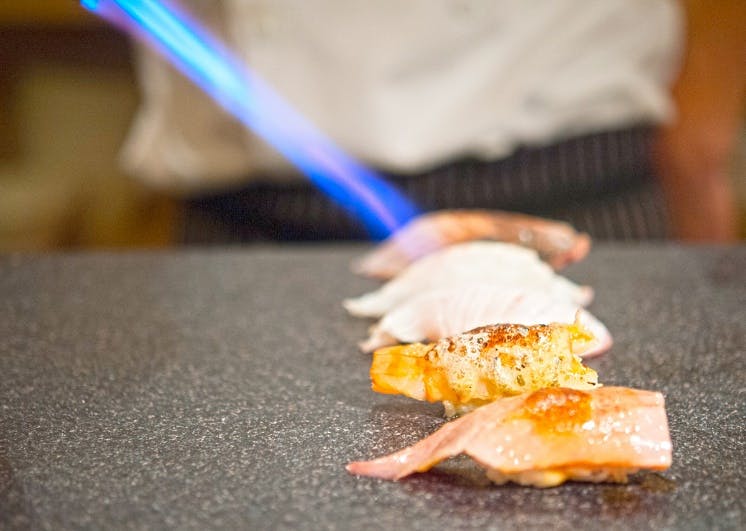
Searing our aburi pieces to perfection.
Another trend in sushi is aburi which refers to nigiri sushi that is partially grilled or seared. This innovative technique allows for a dynamic interplay of flavours and textures in each mouthful, the flames enriching the tastes of the different types of fish used.
At JaBistro, our take on a sophisticated Japanese sushi restaurant in the heart of Toronto, we make every piece of sashimi, sushi, aburi, and oshizushi as if they were a work of art and a lesson in tradition and history. Travel through time with your taste buds and dive right into a world of delectable flavours.
